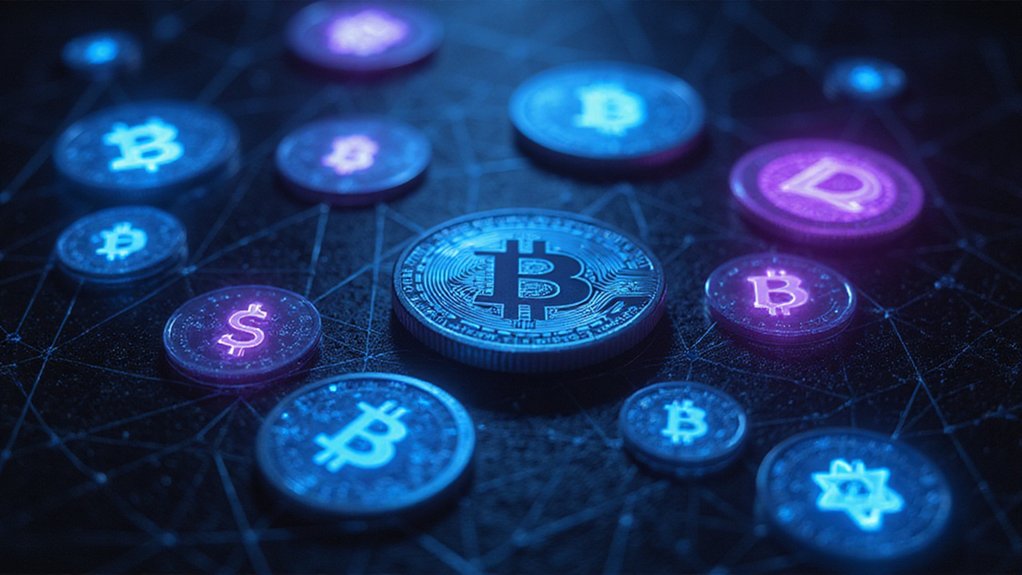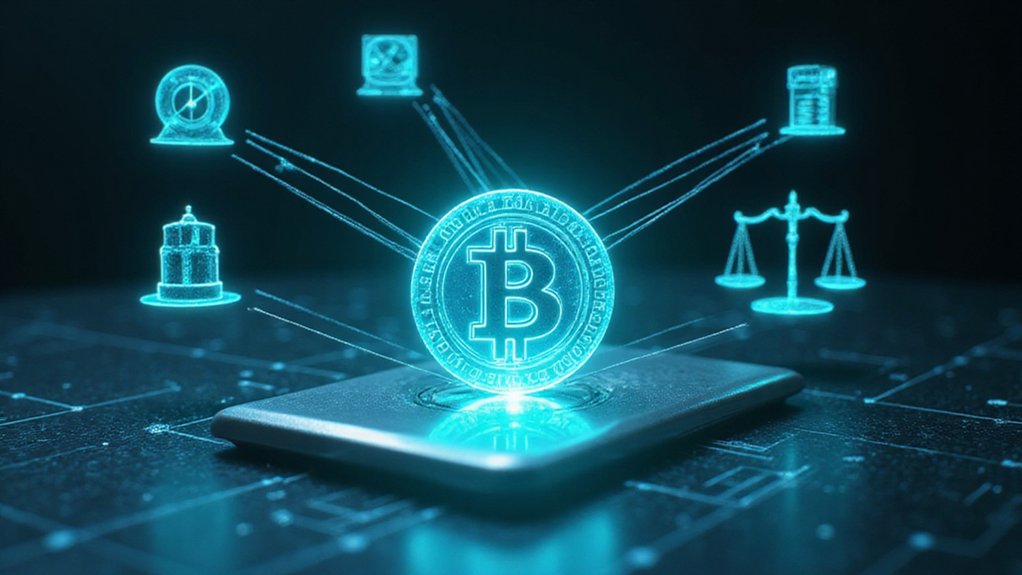Mining Ripple (XRP) is fundamentally impossible—a critical distinction often missed by cryptocurrency neophytes. Unlike Bitcoin, all 100 billion XRP tokens were pre-mined at inception, with Ripple’s consensus mechanism utilizing trusted validators rather than competitive mining. Those advertising “XRP mining opportunities” are invariably operating fraudulent schemes. Legitimate acquisition methods include exchange purchases, liquidity provision, or participation in validated lending protocols. The architecture behind this mining impossibility reveals Ripple’s distinctive approach to blockchain efficiency.

The curious paradox of “mining” Ripple (XRP) lies in its fundamental impossibility—a fact that eludes many cryptocurrency enthusiasts still wedded to the Bitcoin paradigm. Unlike its proof-of-work predecessors, Ripple created all 100 billion XRP tokens at genesis, establishing a fixed supply that paradoxically diminishes over time as transaction fees are permanently burned from circulation.
This architectural distinction renders traditional mining concepts inapplicable to XRP. The network employs the Ripple Protocol Consensus Algorithm (RPCA), wherein trusted validators—typically established institutions rather than anonymous miners—achieve consensus on transaction legitimacy every 3-5 seconds. The absence of competitive block creation eliminates the resource-intensive computational arms race characteristic of Bitcoin’s ecosystem. This yields remarkable energy efficiency and transaction velocity. These validators, which can include financial institutions or universities, work cooperatively to maintain network reliability and security.
When confronted with platforms purporting to offer “XRP mining services,” the financially literate observer must exercise skepticism. Such offerings invariably constitute either misrepresentations or outright fraudulent schemes designed to separate the credulous from their capital. The proliferation of these dubious operations underscores a persistent knowledge gap in cryptocurrency markets (where misconceptions propagate with viral efficiency). Beware that these are fraudulent schemes promising impossible returns on nonexistent mining capabilities.
Cryptocurrency ignorance fuels fraudulent XRP mining schemes, preying on those who fail to grasp fundamental consensus mechanisms.
Alternative methods for accumulating XRP do exist, however. Liquid mining—providing assets to XRP liquidity pools on decentralized exchanges—represents a legitimate yield-generating strategy. More conventionally, XRP may be acquired through direct purchase on regulated exchanges, participation in lending protocols, or engagement with cautiously vetted faucet services. The built-in DEX allows users to trade assets directly on the XRP Ledger without relying on third-party exchanges.
The elegance of Ripple’s consensus mechanism deserves appreciation on its own merits rather than forced comparison to mining paradigms. By replacing competitive mathematical puzzle-solving with institutional validation, XRP achieves remarkable transaction throughput without mining’s environmental externalities. Understanding this fundamental distinction between consensus mechanisms illuminates why mining discussions remain perpetually misapplied to XRP.
For investors seeking involvement with this asset class, acknowledging XRP’s unique validation architecture provides essential context. While mining’s impossibility might initially disappoint some, the accompanying benefits—transaction speed, energy efficiency, and network stability—ultimately represent compelling technological compensations.
Frequently Asked Questions
Is Ripple Mining Environmentally Sustainable Compared to Bitcoin?
Ripple mining doesn’t actually exist—a vital distinction often overlooked by cryptocurrency neophytes.
XRP operates on the XRP Ledger’s consensus protocol, which eliminates the energy-intensive mining process altogether.
This architectural decision renders XRP monumentally more sustainable than Bitcoin’s notorious proof-of-work system, which devours electricity at rates that would make small nations blush.
While Bitcoin mining leaves a carbon footprint visible from space, XRP’s validation mechanism requires about as much energy as charging one’s phone.
Can I Join a Ripple Mining Pool to Increase Profits?
One cannot join a “Ripple mining pool” in the traditional sense, as XRP fundamentally doesn’t employ mining mechanisms—a fact that seems persistently misunderstood in crypto circles.
What’s actually available are liquidity pools on DEXs (where one provides XRP alongside other assets to earn trading fees) or misleadingly-named “cloud mining” services that mine other cryptocurrencies and merely pay rewards in XRP.
These alternatives represent profit opportunities, albeit ones requiring appropriate categorization and expectations.
What Hardware Specifications Are Recommended for Optimal Ripple Mining Performance?
The question reflects a fundamental misunderstanding: XRP cannot be mined.
Unlike proof-of-work cryptocurrencies, Ripple operates on a consensus protocol without mining mechanics.
The hardware specifications mentioned would instead apply to running a validator node (4+ core CPU, 16GB RAM, 256GB SSD, reliable internet connection).
Validators don’t earn XRP rewards but merely contribute to network integrity—a distinction that regularly confounds cryptocurrency newcomers who’ve encountered Bitcoin’s mining paradigm but haven’t grasped XRP’s distinctive consensus architecture.
How Does Ripple’s Consensus Algorithm Affect Mining Difficulty?
Ripple’s consensus algorithm (RPCA) fundamentally eliminates the concept of mining difficulty altogether—a curious case of solving a problem by removing its existence.
Unlike proof-of-work cryptocurrencies where computational puzzles scale in complexity, XRP’s validator-based approach bypasses this paradigm entirely.
The system achieves consensus through trusted node agreement rather than competitive hashing, rendering “mining difficulty” moot.
This architectural choice delivers XRP’s hallmark efficiencies: near-instant settlements and negligible energy consumption, without the oscillating difficulty adjustments plaguing traditional mining networks.
What Are the Tax Implications of Mining Ripple?
Mining Ripple presents a peculiar tax conundrum, given that XRP isn’t technically minable in the traditional sense.
However, were one to acquire XRP through consensus participation, the IRS would treat such proceeds as ordinary income at fair market value upon receipt.
Subsequently, any appreciation would trigger capital gains tax upon sale.
Self-employment taxes might apply if one’s participation constitutes a trade or business—a determination that, like most things tax-related, remains delightfully ambiguous without professional consultation.









